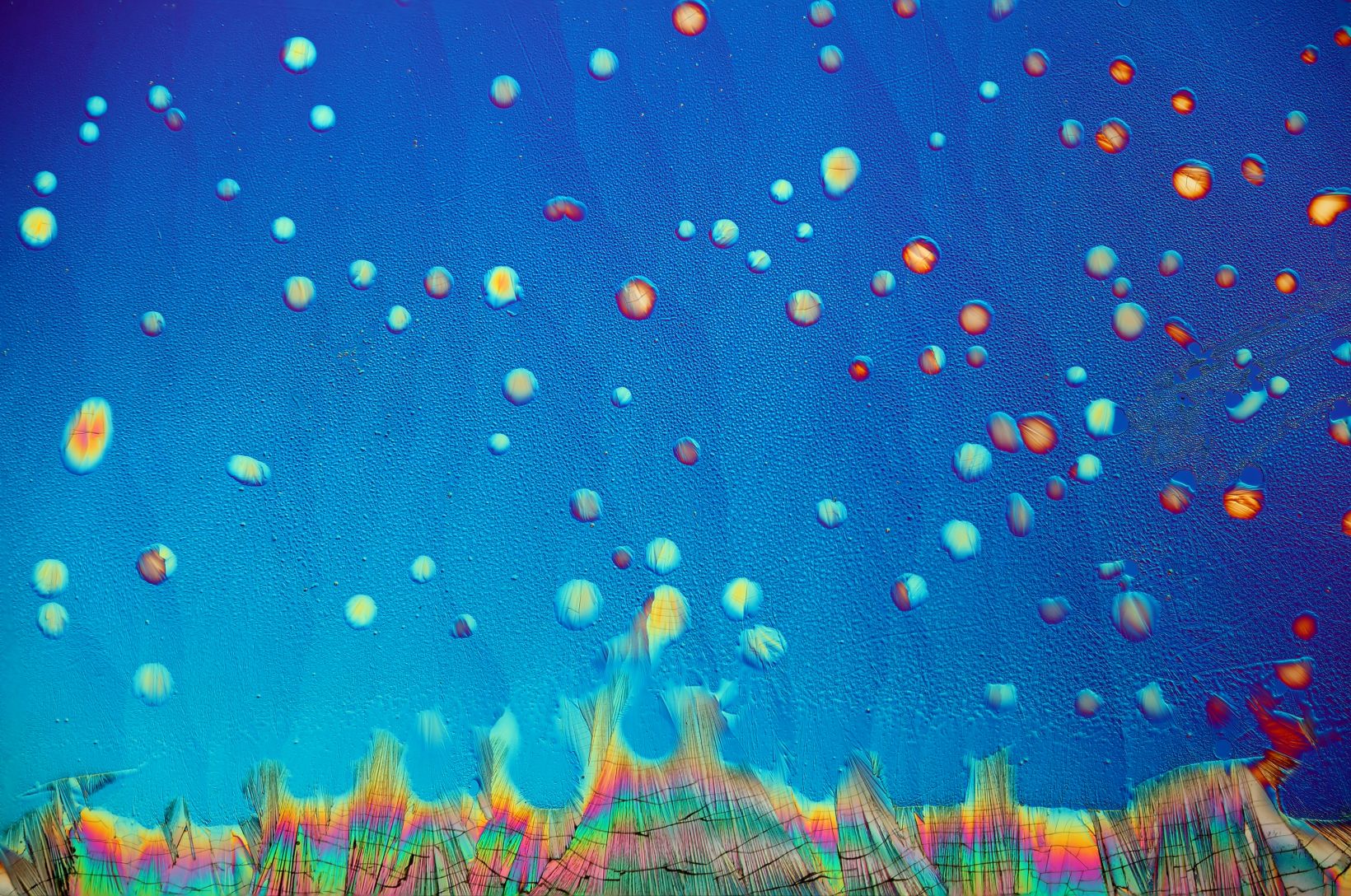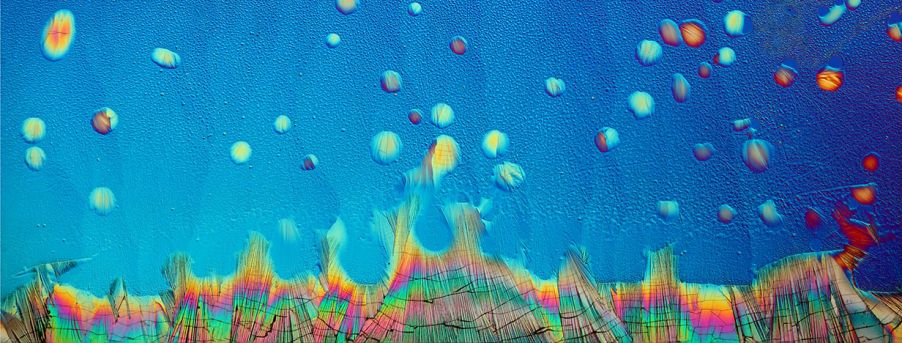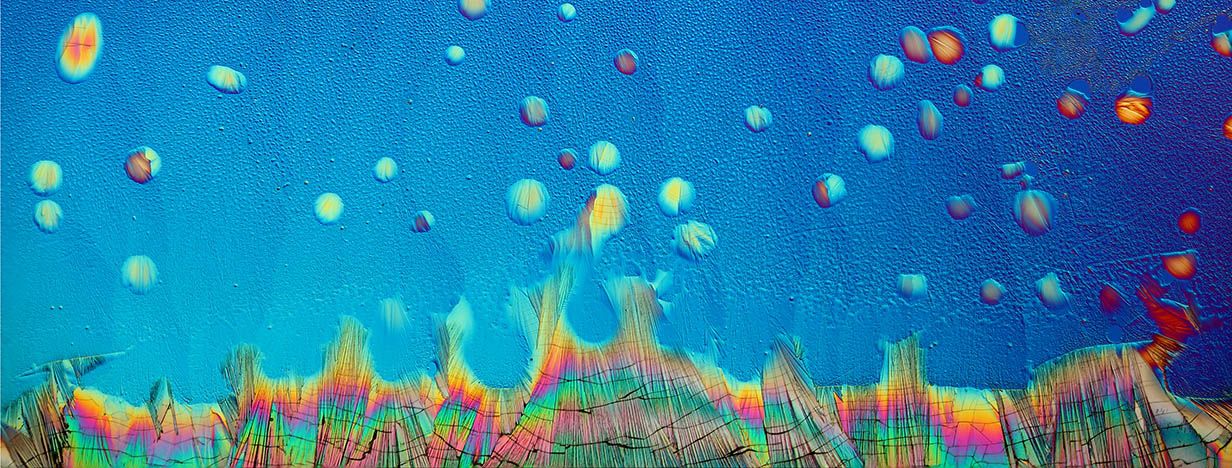Microscopy really is an art form for Karl Gaff. The beauty of his 2nd prize winning image lies not only in the image itself but also in the impressive optical effects and ingenious contrast methods used to produce it. Our judges had no doubt that it deserved an Image of the Year (IOTY) Award. We spoke to Karl to get the scoop on how he made it.
Although it looks like a beautiful painting, what you are actually looking at is a 100x magnification of solidified dopamine microdroplets on a glass substrate.
“I put a small quantity of dopamine on a glass slide and heated it. When it melted, it sizzled and splattered across the substrate forming small pools and tiny droplets. I call this picture ‘Ice Rain’."

You can see the main dopamine crystal running along the bottom of the frame. It has cracked from the contraction of cooling.
Possibly one of the most amazing things about this image is that is was taken from a completely translucent sample. So, where do all the striking colors come from?
Karl explained that he used an Olympus BX51 microscope configured for differential interference contrast (DIC).
“The dopamine film is translucent, but when placed in the DIC light path, you can see individual crystal grains and the dazzling interference colors they produce from their varying thicknesses and respective orientations. You can adjust the colors by translating the Nomarski prism, positioned above the objective, back and forth.”
The resulting orange or magenta regions are the thickest parts of the films while the silver and blue are the thinnest. The striking colors are produced by a combination of birefringence, a property of the crystal structure, and optical interference. For this to occur, the thickness of the film must be similar to the wavelength of the light.
For Karl, microscopy and art go hand in hand.
“I was probably about eight years old when I got my first microscope. Over the years, I slowly upgraded with the dream of someday becoming a professional microscopist to effectively capture scientific yet beautiful artistic imagery.”
How does he feel about winning an IOTY award?
“When I set out to photograph crystals, I don’t have a specific goal in mind. It is purely a research and discovery process in the sense that you experiment with different mixing ratios of substances, heating and cooling temperatures as well as environmental conditions. It’s all about finding which permutations provide the most interesting and aesthetic formations. The IOTY award is a great way to get your images out to a wider audience and, especially for me, it’s nice to be recognized for my microscopy skills.”
Get the full details on Karl’s story here. Have an interesting microscopy photo that you think is award worthy? Sign up for the 2019 IOTY!


